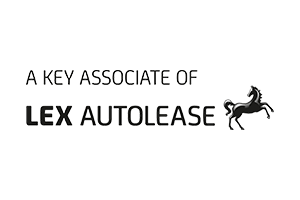Have you been looking at a new lease vehicle but have noticed WLTP being mentioned and are unsure what this is and how it will affect your new lease? If so then we’ve created the below article to help explain what WLTP actually is and how it will impact your new lease.
What is WLTP?
Worldwide Harmonized Light-Duty Vehicles Test Procedure (WLTP) is a test that measures the CO2 emissions and fuel consumption of a vehicle.
The aim of WLTP is to provide more realistic testing conditions which are comparable worldwide across models and give drivers a more accurate idea of the car’s day to day consumption. Although designed to be a universal standard across the globe the test may be applied differently in the EU and other regions depending on their road traffic laws and needs.
As well as being a universal standard across different manufacturers WLTP also covers all engine systems; petrol, diesel, compressed natural gas (CNG) and electric.
The testing standard means that you will have more reliable comparisons between models when deciding what car is right for you.
The measurements taken are also used to verify that the car does not emit more CO2 on average than the target set by the EU, which is currently set at 95g per kilometer for 2021.
Testing under the WLTP was originally introduced in 2017 and since then manufacturers have been working towards switching to these laboratory testing conditions in time for the end of the transition period which in the UK will be the 6th of April 2020.
Previously cars were tested under New European Driving Cycle (NEDC) process which was originally introduced by the EU in 1992. These tests were performed on all passenger and lightweight commercial vehicles and were largely based on theoretical driving and did not reflect real life driving conditions. The aim of the WLTP is to provide measurements that do reflect real life driving.
What’s the Difference Between WLTP and NEDC?
The change from NEDC to WLTP might seem a little confusing, so we’ve taken a look at the test conditions for both and listed them so you can see what’s changed and how the new tests will help you make a better decision on your future leases.
Take a look at the main differences between the two below:
NEDC:
- Vehicles were tested in a single cycle
- The driving cycle lasted for 20 minutes
- The distance measured was 11km
- Two driving phases with 66% urban and 34% non-urban driving
- The average speed was 34km per hour
- The maximum speed was 120km per hour
- There are fixed gear shifting points during the tests
- Additional features which could impact CO2 are not taken into account
- Test temperature of between 20 and 30 °c
WLTP:
- Vehicles are tested in a dynamic cycle to reflect real driving conditions
- The driving cycle lasts for 30 minutes
- The distance measured is 23.25km
- Four dynamic driving phases, across four average speeds of low, medium, high and extra high, with 52% urban and 48% non-urban driving
- The average speed is 46.5km per hour
- The maximum speed is 131km per hour
- Each vehicle has different gear shifting points
- Any additional options are taken into account
- Test temperature of 20 °c and CO2 values are corrected to 14 °c
Why Does It Matter to Me?
The CO2 value given to a vehicle has an impact on the road tax value assigned to the car in the UK. As the road tax is covered for the duration of a lease you will not need to worry about this if you are looking at leasing.
However, the CO2 values also impact the company car tax charged against the vehicle. If you are looking at a business lease, then you will want to consider the WLTP value assigned to the vehicle.
As the new WLTP testing takes into account the additional options added to a vehicle, you might want to keep this in mind when choosing your lease car. For example, a car with standard 18-inch alloys will have a better WLTP than the same model with 20-inch alloys.
The universal standard does mean that you will be able to make a more reliable comparison across models when deciding which car to choose.
When Does the Change Happen?
WLTP measurements are currently being taken on all vehicles, but they are not being used just yet in the UK.
Labelling regulations mean that the WLTP fuel economy values were introduced at the start of the year but the CO2 figures aren’t due to be released until early April to tie in with the change in tax, so all vehicles have been assigned a value but that this has not been released yet.
For all vehicles registered before the 6th of April 2020 the older NEDC value will be used. From the 6th of April onwards the WLTP value will be used. This means that when your vehicle is registered will determine whether the NEDC or WLTP value is used.
What Impact Will This Have on My Xcite Car Leasing Order?
At the minute very few manufacturers have published the WLTP values for their vehicles, which means that leasing quotes on offer are based on current NEDC values.
If you are looking at a lease through Xcite Car Leasing and the lead time on the vehicle is after the 6th of April, then the figures quoted are an estimate based on current figures. As soon as the WLTP figures for the model you are looking at are released we will then be able to confirm the prices for the lease you are interested in.
Please note that this will be the case across the board with all leasing companies.
If you have any questions about WLTP and how this will impact your order, then please get in touch with one of our Leasing Consultants on 0330 221 0000.









Leave a Comment